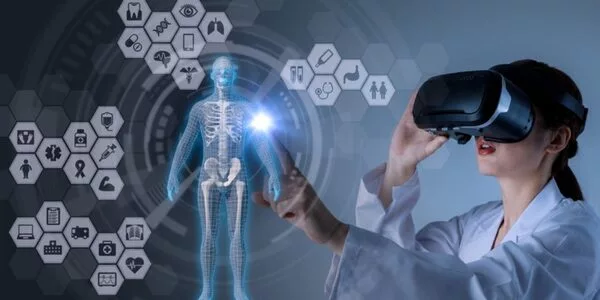Researchers modified a commercial virtual reality headset to measure brain activity and examine how we react to cues, stressors, and other external forces. The University of Texas at Austin research team developed a noninvasive electroencephalogram (EEG) sensor that they installed in a Meta VR headset that can be worn comfortably for extended periods of time. During immersive VR interactions, the EEG measures the electrical activity of the brain.
The device could be used in a variety of ways, including assisting people with anxiety, measuring aviators’ attention or mental stress using a flight simulator, and allowing humans to see through the eyes of a robot.
“Virtual reality is so much more immersive than just doing something on a big screen,” said Nanshu Lu, the research’s principal investigator and a professor in the Cockrell School of Engineering’s Department of Aerospace Engineering and Engineering Mechanics. “It gives the user a more realistic experience, and our technology enables us to get better measurements of how the brain is reacting to that environment.”
Soft Science published the findings.
Virtual reality is so much more immersive than just doing something on a big screen. It gives the user a more realistic experience, and our technology enables us to get better measurements of how the brain is reacting to that environment.
Nanshu Lu
The combination of VR and EEG sensors has already made its way into the commercial sphere. However, current devices are expensive, and the researchers claim that their electrodes are more comfortable for the user, extending the potential wearing time and opening up new applications.
The best EEG devices available today consist of a cap covered in electrodes, but this does not work well with the VR headset. Individual electrodes struggle to get a strong reading because our hair prevents them from connecting with the scalp. The most common electrodes are rigid and comb-shaped, inserting through the hairs to connect with the skin, creating an uncomfortable experience for the user.
“All of these mainstream options have significant flaws that we tried to overcome with our system,” said Hongbian Li, a research associate in Lu’s lab. Li led the effort to develop a spongy electrode made of soft, conductive materials that overcomes these issues for this project. The modified headset features electrodes across the top strap and forehead pad, a flexible circuit with conductive traces similar to Lu’s electronic tattoos, and an EEG recording device attached to the back of the headset.

This technology will be used in another major research project at UT Austin: a new robot delivery network that will also serve as the largest human-robot interaction study to date.
Lu is involved in the project, and the VR headsets will be used by people traveling with robots or in a remote “observatory.” They will be able to observe from the robot’s point of view, and the device will also measure the mental load of this prolonged observation.
“If you can see through the eyes of the robot, it paints a clearer picture of how people are reacting to it and lets operators monitor their safety in case of potential accidents,” said Luis Sentis, a professor in the Department of Aerospace Engineering and Engineering Mechanics who is co-leading the robot delivery project and is a co-author on the VR EEG paper.
The researchers created a game to test the viability of the VR EEG headset. They collaborated with José del R. Millán, an expert in brain-machine interfaces and a faculty member in the Chandra Family Department of Electrical and Computer Engineering and the Dell Medical School, to create a driving simulation in which the user presses a button to respond to turn commands.
The EEG monitors the users’ brain activity as they make driving decisions. In this case, it demonstrates how attentive the subjects are. The researchers have submitted preliminary patent paperwork for the EEG and are interested in collaborating with VR companies to develop a built-in version of the technology.
















